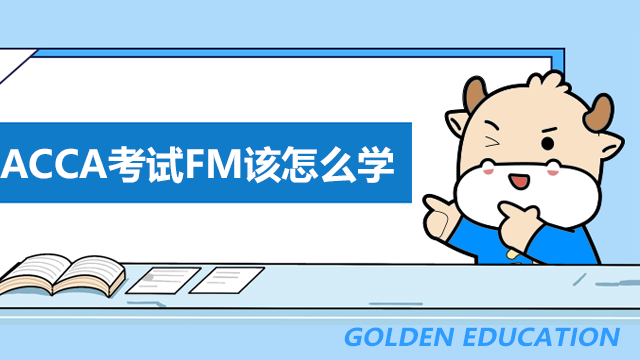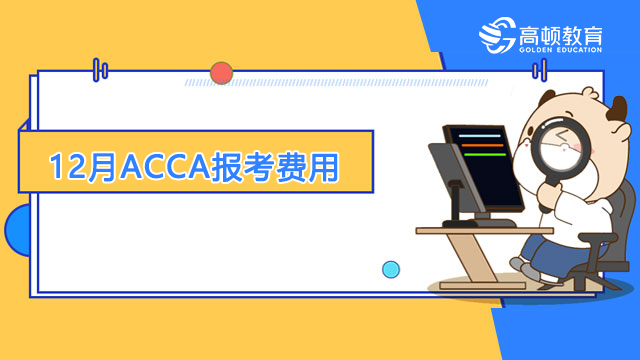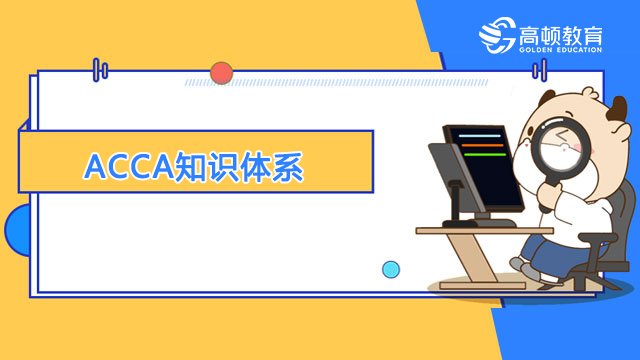2012年12月ACCA考试F7考试考官报告
来源:
高顿网校
2013-06-21
每次考试结束ACCA考官都会根据本次考试考生的总体表现情况写报告,具体分析学生在答题过程中出现的问题,总结学生在备考该科目时应该注意的事项,以下是2012年12月F7考官报告:
General Comments
I am pleased to report that candidates’ performance on this diet was much improved compared to recent diets with a pass rate of over 50%. The paper was regarded by most commentators as a fair test where a well-prepared candidate would readily succeed. There appeared to be very little evidence of time constraint problems. Maintaining the familiar trend, the best answered questions were the consolidation in question 1 and financial statements preparation in question 2. Question 3 on the calculation and analysis of ratios was more mixed, with candidates being weaker on the interpretation aspect. Answers to questions 4 and 5 (relating to the wider syllabus areas) were also mixed, reflecting whether candidates had studied the wider syllabus topics. There were many very good scripts scoring 70 and some really impressive answers scoring well into the 80s. As usual I have to report some examination technique issues almost all of which I have commented on in previous reports: Not reading the question properly was a problem, particularly in question 3 (b) where many candidates treated the ‘sector average’ ratios as being the previous year’s ratios of the company being appraised. Such a misreading rendered many of the points made by candidates meaningless. Several figures worth a high number of marks had no workings, making it impossible for markers to know how the figures have been derived. Thankfully this was only a minority of scripts but where this happens it is difficult to award marks.
Many answers were a repeat of rote learned material and not applied to the question asked. For example, question 3 (c) asked for the limitations of the usefulness of comparing a company’s own ratios with the 'sector averages'. Many, indeed most, answers to this were an iteration of the general limitations of ratio analysis and not those related specifically to a sector average comparison. Yet again poor handwriting was an important concern for many markers (particularly for the written elements); if markers cannot read what a candidate has written, no marks can be awarded. A lot a time is wasted by needless repetition of points and providing unnecessary numbered workings for the simplest of calculations/adjustments where inset figures would be quicker for candidates and easier for markers to assess. The format and style of the answers published on the ACCA website provides a useful guide as to the amount of detail required for a successful answer.
The composition and topics of the questions was such that on this diet there was very little difference between the International Paper (the primary paper) and all other variant papers, thus these comments generally apply to all streams.
Specific Comments
Question One
The main part of the question (part (b)) required the preparation of a consolidated income statement (statement of profit or loss) for a parent and a subsidiary that was acquired three months into the reporting year. This was preceded by the calculation of consolidated goodwill as at the date of acquisition and followed by a small written section testing how a fair value increase in leased property should be treated on acquisition together with any post-acquisition increase in its value. Further adjustments required the elimination of intra-group sales and unrealised profit (URP), impairment to goodwill and additional depreciation from the fair value adjustments. Most candidates scored very well on the calculation of the goodwill, many scored full marks. Where problems arose, they were mainly not discounting the deferred consideration (and consequently not charging an additional finance cost in the income statement (statement of profit or loss)), ignoring the non-controlling interest and not taking account of the pre-acquisition movement in profit since the beginning of the year. On this latter point a number of candidates took the retained earnings at the start of the year as being the year end retained earnings despite the fact that the start of the year date was typed in bold in the question. Also a significant number of candidates incorrectly included post - acquisition items (additional depreciation and URP) and omitted (or incorrectly signed) the contingent liability as a fair value adjustment in the calculation of goodwill. The main consolidation was also done well with the vast majority of candidates clearly having a good working knowledge of consolidation techniques. Though, as might be expected, it was the more complex aspects where errors occurred: - incorrect calculation of the URP and additional depreciation adjustments (particularly not time apportioning the depreciation)- not eliminating the dividend of the associate - time apportioning the investment income from the associate (the question stated this had been held for several years) - not time apportioning the additional finance cost or ignoring it altogether - not adjusting the non-controlling interest calculation for the additional depreciation and goodwill impairment Some candidates did not realise that the subsidiary’s results must be included on a time apportioned basis (i.e. for only nine months) and a small number of candidates continued to apply proportional consolidation to the subsidiary's results.
Several candidates wasted considerable time calculating the retained earnings and non-controlling interests as they would appear in the statement of financial position. The question did not require these items. The main source of problems in question 1 was part (c), the treatment of increases in the fair value of a subsidiary’s leased property on consolidation. The question asked how a fair value increase at the date of acquisition should be treated followed by the treatment of any subsequent increases. Bizarrely, a significant number of candidates thought this was a question about whether a lease was a finance lease or an operating lease. Others did not distinguish between pre-acquisition and post-acquisition increases. Most did identify that the fair value increase should be reflected in the carrying amount of property, plant and equipment and some referred to additional subsequent depreciation, but not many stated the effect on consolidated goodwill and that (where group policy requires) post-acquisition increases are reported in other comprehensive income (OCI), create a revaluation reserve and will impact on the non-controlling interest if the subsidiary is not wholly-owned. Despite the above errors there were many high marks for this question.
#p#副标题#e#
Question Two
This question was a familiar preparation of financial statements from a trial balance combined with several adjustments including the exclusion of deferred service income from revenue; issue of a loan note; accounting correctly for an equity dividend; revaluation of land and buildings; a fair value movement in an equity financial asset; and the usual accounting for current and deferred tax. As with question 1 this was very well answered, most candidates showing a sound knowledge of preparing financial statements in this format. Also, as usual, it was the adjustments that caused most of the errors: - only a minority of candidates correctly accounted for the deferred service income; many just used the cost of $600,000 (rather than include the profit element of a further $200,000), some took one or three years (the two years outstanding was correct) and most failed to account for the deferred income in the statement of financial position. Many candidates deducted the cost of the servicing from cost of sales even though those costs had not yet been incurred. - a majority of candidates had problems with the finance costs and the loan note, specifically: not deducting the issue cost before calculating interest; not using the effective rate of 8%; and not following through the addition of accrued interest (the difference between the correct finance cost charge and the interest actually paid) to the carrying amount of the loan as a single (non-current) liability - there were many errors in the calculation of tax; wrong signing of the adjustments and deducting the year end provision for deferred tax (rather than the movement in the provision) - most candidates calculated the revaluation of the land and buildings correctly and included it in other comprehensive income, but, within the statement of changes in equity of part (b), only a few included the transfer to realised profit in respect of the realisation of excess depreciation. A significant number of candidates incorrectly transferred the whole of the revaluation reserve to retained earnings. It was also common (but wrong) to include in OCI the loss on the equity financial asset investment (the default treatment is to include this in profit or loss).
Most answers to the statement of changes in equity were very good although the dividend was often incorrectly calculated (not realising the shares were 25 cents each) or ignored. Weaker candidates included the loan note and/or (more commonly) the equity financial asset investment as part of equity, showing a worrying lack of basic knowledge of what constitutes "equity". The statement of financial position was generally very well prepared with most errors being a follow through of errors made when calculating profit or loss items. Generally such errors are not penalised as ACCA adopts a "method marking" principle which means the same error is not penalised twice. That said, both current and deferred tax were often incorrect, current tax incorrectly included the previous year's under provision and deferred tax was stated as the temporary difference (of $5 million) instead of the liability itself (20% of $5 million). I am pleased to say that after many years of reporting candidates’ poor ability in dealing with property revaluations, in this session most candidates appeared to have practiced past questions and mastered the topic. That said, a number of candidates did (incorrectly) depreciate the land. Overall this was a well-answered question.
#p#副标题#e#
Question Three
This was a three part question. Part (a) required the calculation of eight ratios equivalent to the sector average ratios given in the question. The main part (b) was to assess the relative performance of the company compared to the sector average, and finally a 4-mark section on the limitations of the use of sector averages. Although many scored well on the calculation of the ratios, many candidates made mistakes in this part. It was common to see a calculation of the return on equity (ROE) rather than the return on capital employed (ROCE) and many other errors were, I believe, simply careless: - calculating the profit after tax margin (rather than the operating profit margin) - inventory days rather than inventory turnover or using closing inventory instead of average inventory or inventory turnover based on revenue rather than of cost of sales - trade payables period based on cost of sales rather than purchases - debt/(debt + equity) instead of debt/equity Whilst many of the incorrectly given ratios may be useful ratios in themselves, it invalidates the comparison to the sector average ratios (required in part (b)) if precisely the same ratios are not used.
The assessment of financial performance required in part (b) was quite disappointing with many of the usual weaknesses of past answers on this type of question. Some answers simply stated whether the ratios were higher or lower than the sector average (without even saying which was good or bad). Such an approach gains few, if any marks; it is simply not interpretation. A good answer requires candidates to identify comparative strengths or weakness and give a plausible explanation of why they may have occurred. As mentioned earlier, several candidates did not read the question properly and thought that the sector average ratios given in the question were the previous year’s ratios of the company under assessment. Common errors were to attribute a fall in the operating profit margin to the high finance costs (which is not the case as this ratio does not include finance costs) and arguing that an increase in the average inventory turnover was an indicator of a deteriorating situation (possibly obsolete inventory, etc) due to high inventory levels. The opposite of this is the case; I assume candidates confused the increase in inventory turnover with an increase in inventory holding period which would indicate higher inventory levels. Many candidates commented that the lower gross profit margin was a consequence of the high level of purchases, when what, I suspect, they really meant was that the cost of the purchases was high. Very few candidates noticed that the company's operating costs, as a % of revenue, were lower than the sector average as they did not take into account the lower gross margin. It was the case that the company’s operating margin was below the sector average, but this was due to poor gross margins and not poor control of operating costs Part (c) was the worst answered section. It seemed candidates gave little thought to what was being asked. Rather than consider what might be the inherent problems when comparing an individual company’s ratios to the averages of its competitors, many answers just reeled off rote learned limitations of ratio analysis in general. Issues such as distortion due to inflation (rising prices), use of historical cost figures and year end balances not (necessarily) being representative of average values are common limitations to both the individual company and the sector as a whole. Relevant points would be the use of differing accounting policies/estimates, different year end (a clue to this was in the question) and possible differences (or misunderstanding) of how the ratios should be calculated.
Overall, despite relatively easy marks available for the ratio calculations, the performance on this question suffered from the problems explained above relating to the interpretation element.
Question Four
This question opened with a section on two of the Conceptual Framework’s characteristics, those of understand ability and comparability and linking consistency to the concept of comparability. Part (b) required candidates to calculate financial statement figures for the second year of a construction contract where the company had changed its method of calculating the percentage of completion. The final part asked candidates to explain why the change in part (b)(i) was a change of accounting estimate rather than a change in accounting policy.
Most candidates scored two to four marks on part (a) showing a reasonable understanding of the topic. My main criticism was that the lower scoring answers were too simplistic along the lines of ‘understand ability means that financial statements should be in a form that users can understand’. Such answers failed to mention that users should have a reasonable accounting knowledge and be prepared to study the financial statements or take advice and that management should not ‘clutter’ the financial statements with so much detail as to obscure the underlying performance. There was also a lot of repetition in many answers to the comparability/consistency section. The better answers did not quite score full marks mainly because they did not cover enough points – there were six marks available for this section. Part (b) was well answered by those making a serious attempt. The main errors were not deducting the first year’s figures when arriving at the profit or loss figure for the second year, in effect their income statement (statement of profit or loss) contained the cumulative results. Some candidates tried to restate the previous year’s results as if the question was based on a change in accounting policy. The statement of financial position answers were generally very good after allowing marks for some incorrect own figures from the income statement (statement of profit or loss). In part (b) (ii) , most candidates said that changing the method of estimating the percentage of completion was a change in accounting estimate (which in fact the question told them), but did not really explain why. Most candidates also failed to distinguish the change in accounting estimate from a change of accounting policy mainly because they did not attempt to identify what the accounting policy was.
#p#副标题#e#
Question Five
In part (a), this question tested candidates’ knowledge of a ‘compound’ non-current asset whose components required separate depreciation, together with a related government grant and environmental provision. Part (b) required candidates to advise on whether a provision was required for future environmental costs (fitting antipollution filters) and whether an existing provision should be reduced immediately as a consequence of the requirement for the new filters to be fitted. Most candidates who attempted this question scored very well on part (a), indeed many scored full marks. The most common errors were discounting (rather than compounding) the environmental provision and failing to include either the deferred government grant or the finance cost of the provision in the income statement (statement of profit or loss). Part (b) was less well answered. The majority of candidates believed that because the legislation requiring fitting of the filters was enacted within the current year, this meant a provision should be made immediately. This view ignored the fact that the legislation did not come into force for two years, and, perhaps surprisingly, even then it would not constitute a liability (as the costs could be avoided). It follows that if there should be no provision for fitting the filters, the existing environmental provision should NOT be reduced immediately. Where candidates had argued that the provision for fitting the filters should be made and, as a consequence, the environmental provision could be reduced, credit was given for the consistency of the argument.
Conclusion Overall this was a solid performance with candidates scoring better on the wider topic areas of questions of 4 and 5 although the interpretation required in question 3 was disappointing. Many of the above comments on the individual questions focus on where candidates made errors. This is intended to guide candidates’ future studies and to highlight poor techniques with a view to improving future performance. This should not detract from the many excellent papers where it was apparent that candidates had done a great deal of studying and they were rewarded appropriately.
高顿网校特别提醒:已经报名2013年ACCA考试的考生可按照复习计划有效进行!另外,高顿网校2013年ACCA考试辅导高清课程已经开通,通过针对性地讲解、训练、答疑、模考,对学习过程进行全程跟踪、分析、指导,可以帮助考生全面提升备考效果。报考指南: 2013年ACCA考试报考指南
考前冲刺:ACCA考试试题 考试辅导
高清网课:ACCA考试网络课程
版权声明:本条内容自发布之日起,有效期为一个月。凡本网站注明“来源高顿教育”或“来源高顿网校”或“来源高顿”的所有作品,均为本网站合法拥有版权的作品,未经本网站授权,任何媒体、网站、个人不得转载、链接、转帖或以其他方式使用。
经本网站合法授权的,应在授权范围内使用,且使用时必须注明“来源高顿教育”或“来源高顿网校”或“来源高顿”,并不得对作品中出现的“高顿”字样进行删减、替换等。违反上述声明者,本网站将依法追究其法律责任。
本网站的部分资料转载自互联网,均尽力标明作者和出处。本网站转载的目的在于传递更多信息,并不意味着赞同其观点或证实其描述,本网站不对其真实性负责。
如您认为本网站刊载作品涉及版权等问题,请与本网站联系(邮箱fawu@gaodun.com,电话:021-31587497),本网站核实确认后会尽快予以处理。
点一下领资料
【整理版】ACCA各科目历年真题
真题高频考点,刷题全靠这份资料
下载合集
acca全科学习思维导图
梳理核心考点,一图看懂全部章节
下载合集
2023年acca考纲解析
覆盖科目重难点,备考按照计划走
下载合集
acca备考 热门问题解答
- acca考试怎么搭配科目?
-
建议优先选择相关联的科目进行搭配报考,这样可以提高备考效率,减轻备考压力,1、F1-F4:为随时机考科目,难度较低,这里可以自行随意选择考试顺序。2、F5-F9:如果你的工作的和财务会计或者审计有关、或者你比较擅长财务和审计的话,推荐先考F7和F8。你可以选择一起考ACCA考试科目F7和F8或者先考F7(8)再考F8(7),这就要取决你一次想考几门。3、P阶段:选修科目中,建议企业首选AFM!第二部分科目进行选择,如果AA和SBR掌握学生更好,可以通过选择AAA,如果SBL掌握的好,可以自己选择APM。
- acca一共几门几年考完?
-
acca一共有15门考试科目,其中有必修科目和选修科目,考生需要考完13门科目才能拿下证书。
- acca一年考几次?
-
acca一年有4次考试,分别是3月、6月、9月和12月,分季机考科目是采取的这类四个考季的模式,而随时机考则是没有这方面的时间规定限制,可以随报随考。
- acca的含金量如何?
-
ACCA证书的含金量是比较高的,从就业、能力提升、全球认可等角度来说,都是比较有优势的证书,其含金量主要表现在以下几个方面:1、国际化,认可度高;2、岗位多,就业前景好;3、缺口大,人才激励。
严选名师 全流程服务
其他人还搜了
热门推荐
-
acca《TX税务》2023-2024考纲变动高达10%,考生请注意! 2023-04-25
-
accaf阶段包括哪几门?这些重点你要注意! 2023-03-30
-
accaF阶段科目考完需要多久?难度大吗? 2023-03-28
-
accaF阶段科目详细信息介绍,这篇介绍全了! 2023-03-23
-
acca《AA审计与认证业务》详细介绍,一文完全了解! 2023-03-17
-
accaF阶段科目介绍,全科难度排序来了! 2023-03-15
-
accaF阶段学多久?学姐经验分享! 2023-03-10
-
accaF阶段科目先考哪个好?报考要注意什么? 2023-02-15
-
accaF8怎么学?备考经验总结! 2023-01-18
-
ACCA考试F阶段考试科目 2022-11-01
-
ACCAf1考试有原题多不多?如何查看考试成绩? 2022-10-19
-
ACCAf阶段的科目内容分别是什么?考试形式是什么? 2022-10-11
-
ACCAf阶段考试科目有哪些?学科内容都是什么? 2022-10-11
-
在上海读ACCA专业的就业前景如何?报名条件是什么? 2022-10-09
-
在上海读ACCA专业的就业前景如何?报名条件是什么? 2022-10-09
-
在上海读ACCA专业的就业前景如何?报名条件是什么? 2022-10-09
-
2023年ACCA考试报名条件是什么?考试报名流程是什么? 2022-09-26
-
2023年3月份考试ACCAf阶段的考试内容是什么?附答题技巧 2022-09-26
-
ACCAf1考试时间是怎么安排的?看完这篇你就知道了 2022-09-13
-
特许公认会计师基础阶段的考试内容是什么?考察什么内容? 2022-09-08
-
ACCA考试FM该怎么学?这份攻略请收好! 2022-09-08
-
ACCA专业的就业前景如何?报名条件是什么? 2022-08-26
-
ACCAf5到f9搭配如何搭配更好?附备考建议! 2022-08-26
-
ACCA要通过多少门才有用?如何申请会员证书? 2022-08-18
-
ACCAf1考试有原题多吗?如何查看考试分数? 2022-08-17
-
12月ACCA报考费用多少钱?报名截止日期什么时候? 2022-08-15
-
ACCA知识体系是什么?附备考攻略! 2022-08-15
-
9月ACCA前四科考试时间是什么时候?附考试攻略! 2022-08-15
-
9月ACCA的F2考试时间是什么时候?什么时候出成绩? 2022-08-12
-
ACCA考下来薪资有多少?考了ACCA有什么好处? 2022-08-08
 更多服务
更多服务







































